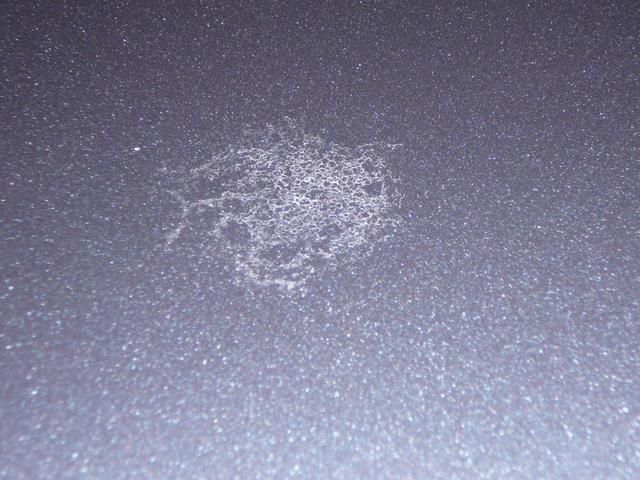Be cognizant that the longer the deposit remains on the bodywork and the higher the ambient temperatures, the harder the dried deposit will be, and the greater the propensity for paint damage. This type of damage can only be prevented by motorists remaining vigilant and removing the deposit as this pollutant can have a serious negative impact on your paint finish if not removed safely and expediently. Also be aware there are no polymers, nanotechnology coatings or waxes that are acid-proof; they all only offer short-term resistance although they will make them easier to remove
Use the least abrasive product first-
1. Use a paint surface cleaner (Z-PC Fusion Dual Action Paint Cleaner)
2. Try to dissolve the alkaline-based, surface/etched mineral water deposits try one or more of the following;
a) Use a 2:1 or stronger solution of distilled water/distilled white vinegar (Acetic acid)
b) Try a 2:1 solution of distilled water/Isopropyl Alcohol (adjust ratio as required)
c) Or equal parts distilled water/distilled white vinegar/Isopropyl alcohol.
3. Clean the effected surface with Klasse All-In-One or Zaino Z-PC Fusion Dual Action Paint Cleaner
4. Use detailing clay to remove any `hard` surface granules
5. Use a machine polish (Optimum Polish, Optimum Compound) and a cutting (LC White, Orange or Yellow) foam pad (speed # 4- 5.0) to level the surface
6. For CeramiClear or other hard clear coats substitute Menzerna for machine polish; Super Intensive Polish / Nano Polish (105FF) or Final Finish Polish (106FA)
7. Use the least aggressive polish/foam pad first, if this doesn’t remove the problem step-up to a more aggressive polish / foam pad set-up
8. Wet-sand with 2000, 2500 or 3000 grit finishing paper
Results 1 to 1 of 1
Thread: Excrement Removal
-
05-30-2012, 05:46 AM #1What gets overlooked too often is that one must be a student before becoming a teacher.
Thread Information
Users Browsing this Thread
There are currently 1 users browsing this thread. (0 members and 1 guests)
Similar Threads
-
Removal of Bee Pollen Excrement
By togwt in forum Autopia Detailing WikiReplies: 0Last Post: 08-12-2012, 12:18 PM -
Bird Excrement Removal
By togwt in forum Autopia Detailing WikiReplies: 0Last Post: 05-24-2012, 07:06 AM -
Stubborn excrement
By coupe70 in forum Auto Detailing 101Replies: 7Last Post: 08-11-2011, 07:28 AM -
The Power of Bird Excrement
By Carl Anderson in forum Car DetailingReplies: 32Last Post: 07-05-2005, 06:04 AM -
Need Advice On Bird Excrement
By funkbucket007 in forum Car DetailingReplies: 15Last Post: 01-22-2004, 05:40 PM







 Reply With Quote
Reply With Quote
Bookmarks